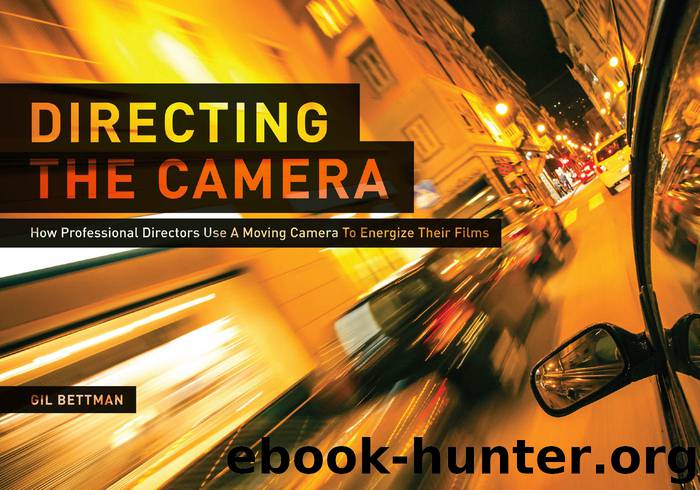Directing the Camera by Bettman Gil

Author:Bettman, Gil
Language: eng
Format: epub
Publisher: Michael Wiese Productions
Published: 2013-10-29T16:00:00+00:00
4.013
4.017
4.021
4.025
4.014
4.015
4.016
4.018
4.019
4.020
4.022
4.023
4.024
4.026
4.027
4.028
When you are starting out as a director and have not yet acquired the experience needed to be infallibly correct in making those hard choices, it is wise to listen to the stunt coordinator and/or DP, and use their judgment to refine your own. A stunt coordinator who works all the time can actually work on more than a thousand projects over a ten-year time span. A DP who works all the time could have shot twenty features or two hundred television episodes over the same length of time. A hot director can make a movie every two years or, at best, ten hours of episodic television a year. So almost inevitably the stunt coordinator and DP are going to have much more experience shooting stunts. A director starting out should take advantage of that experience and keep listening to the stunt coordinator and the DP when trying to determine exactly which shots will do the very best job of selling the stunts he is going to direct.
With that said, there is a certain science to how lens selection and camera placement can be used to make motion in the frame look more dynamic. Once a relatively inexperienced director fully understands this science, he can extrapolate from it and figure out which are the key shots needed to sell a specific stunt, even if he has never shot such a stunt before.
Some people have a gift for this kind of extrapolation. Spielberg’s first wall-to-wall action piece — Duel — the movie for TV starring Dennis Weaver, which he made in 1971, is such a conspicuous display of virtuoso action directing, one has to assume that he could not have picked up all the tricks of the trade on display in this film, either from his own past experience, or from listening to his DP and stunt coordinator. This little movie was shot on a shoestring budget, so every camera setup had to yield the maximum bang for the buck. In order to have determined so successfully exactly which shots he needed to make the action as dynamic as possible, and which he could do without, Spielberg must have relied on his preternatural ability to make these decisions by extrapolating from the basic rules governing how lenses and camera placement can be used to heighten action. These rules will be described in the next two chapters.
Download
This site does not store any files on its server. We only index and link to content provided by other sites. Please contact the content providers to delete copyright contents if any and email us, we'll remove relevant links or contents immediately.
Shoot Sexy by Ryan Armbrust(17637)
Portrait Mastery in Black & White: Learn the Signature Style of a Legendary Photographer by Tim Kelly(16933)
Adobe Camera Raw For Digital Photographers Only by Rob Sheppard(16882)
Photographically Speaking: A Deeper Look at Creating Stronger Images (Eva Spring's Library) by David duChemin(16601)
Bombshells: Glamour Girls of a Lifetime by Sullivan Steve(13953)
Art Nude Photography Explained: How to Photograph and Understand Great Art Nude Images by Simon Walden(12954)
Perfect Rhythm by Jae(5306)
Pillow Thoughts by Courtney Peppernell(4190)
The Book of Joy by Dalai Lama(3882)
Good by S. Walden(3468)
The Pixar Touch by David A. Price(3345)
A Dictionary of Sociology by Unknown(2998)
Fantastic Beasts: The Crimes of Grindelwald by J. K. Rowling(2978)
Humans of New York by Brandon Stanton(2814)
Stacked Decks by The Rotenberg Collection(2796)
Read This If You Want to Take Great Photographs by Carroll Henry(2653)
On Photography by Susan Sontag(2563)
Insomniac City by Bill Hayes(2480)
Photographic Guide to the Birds of Indonesia by Strange Morten;(2476)
